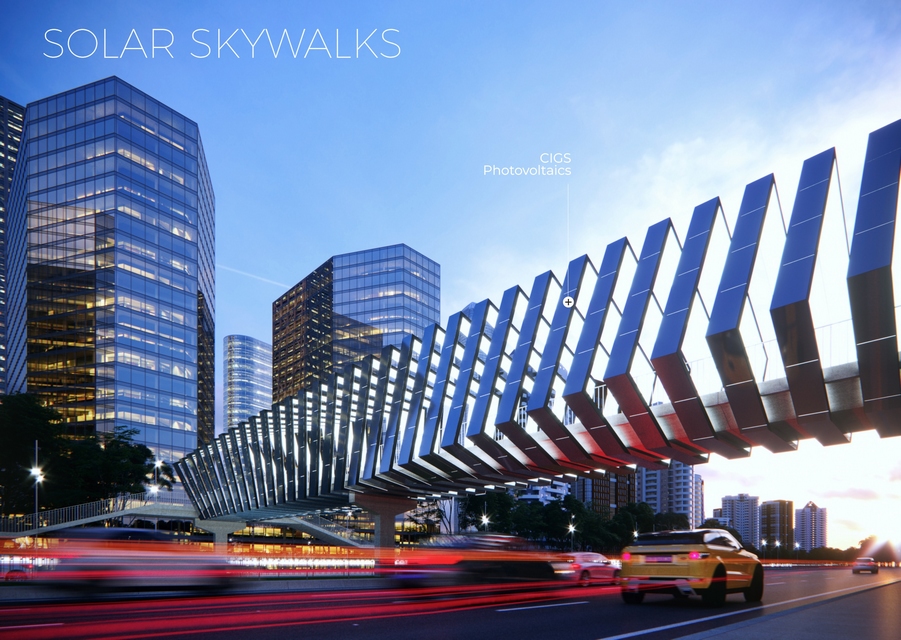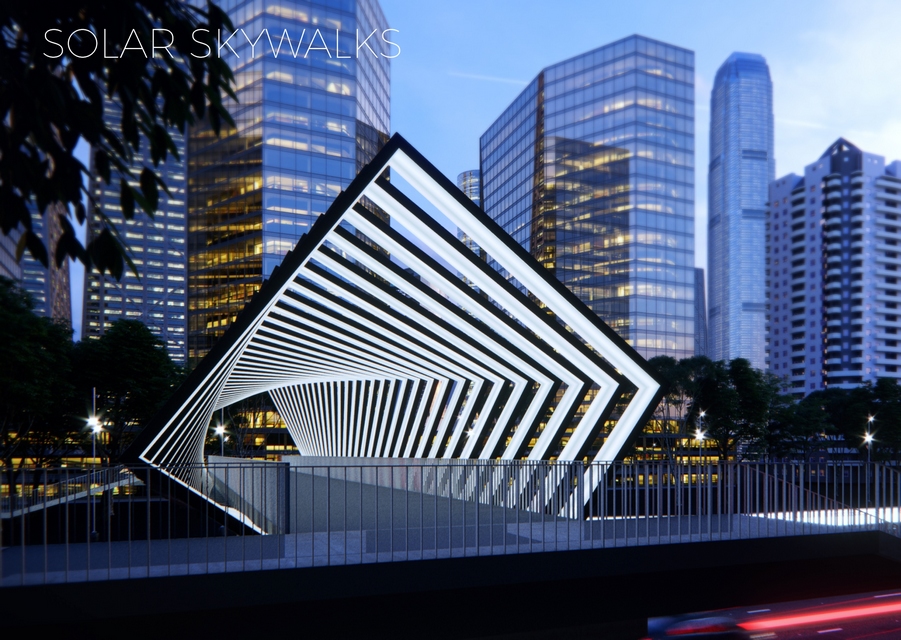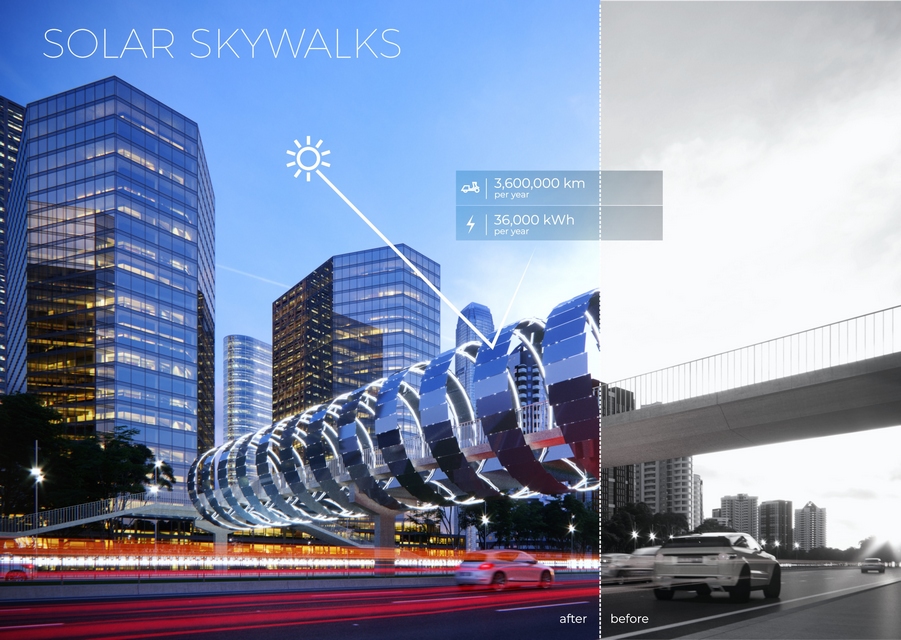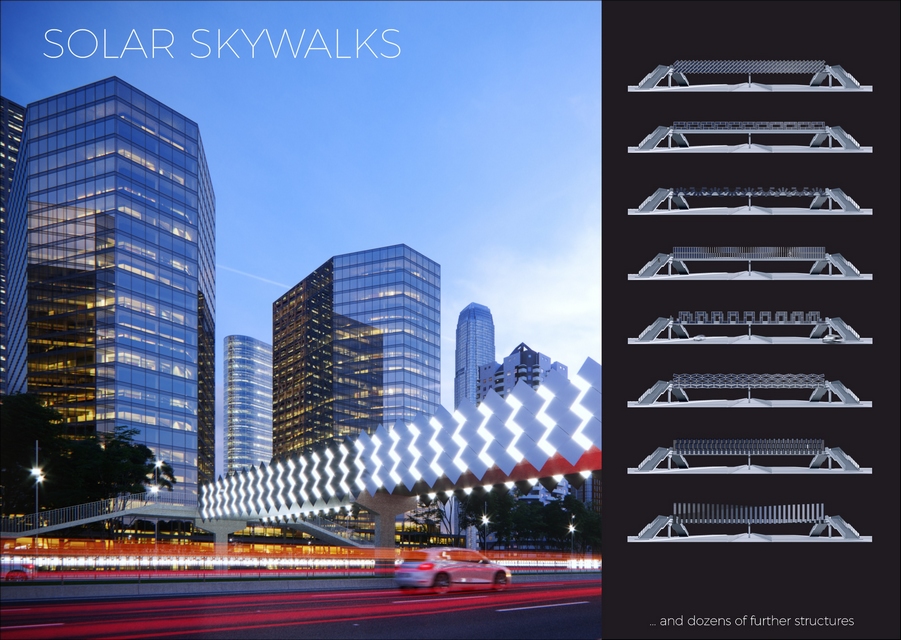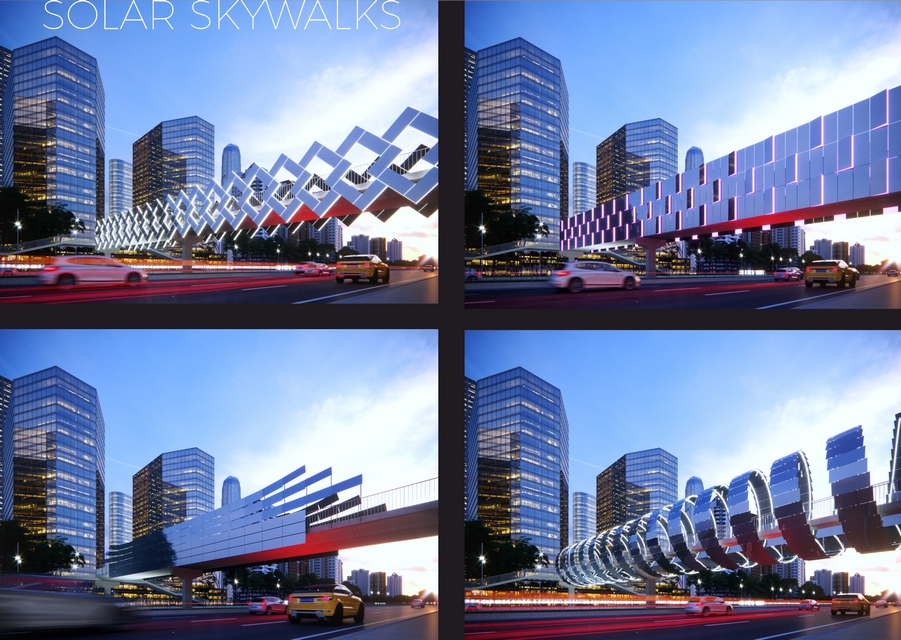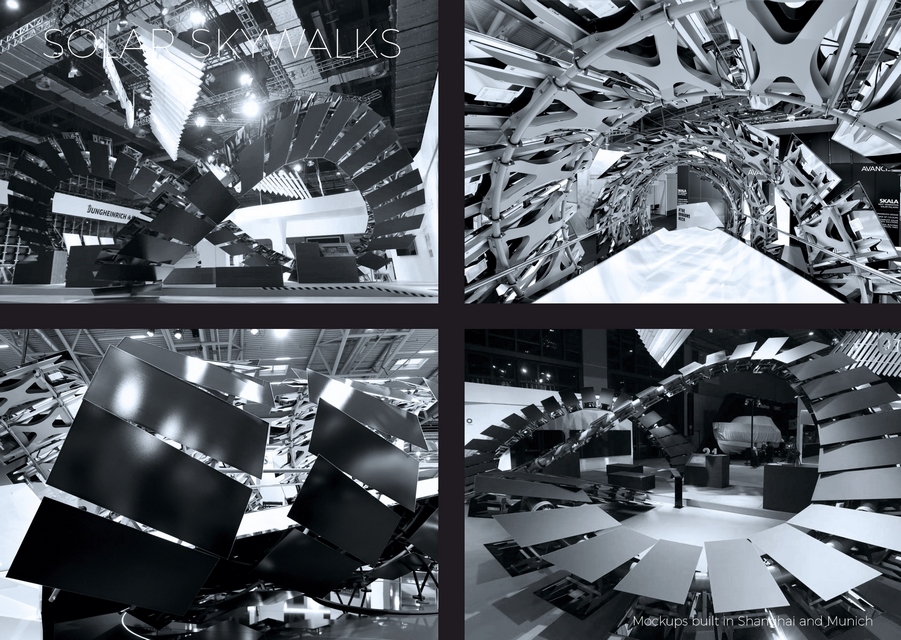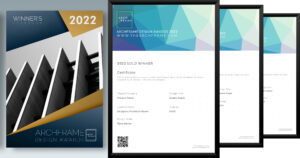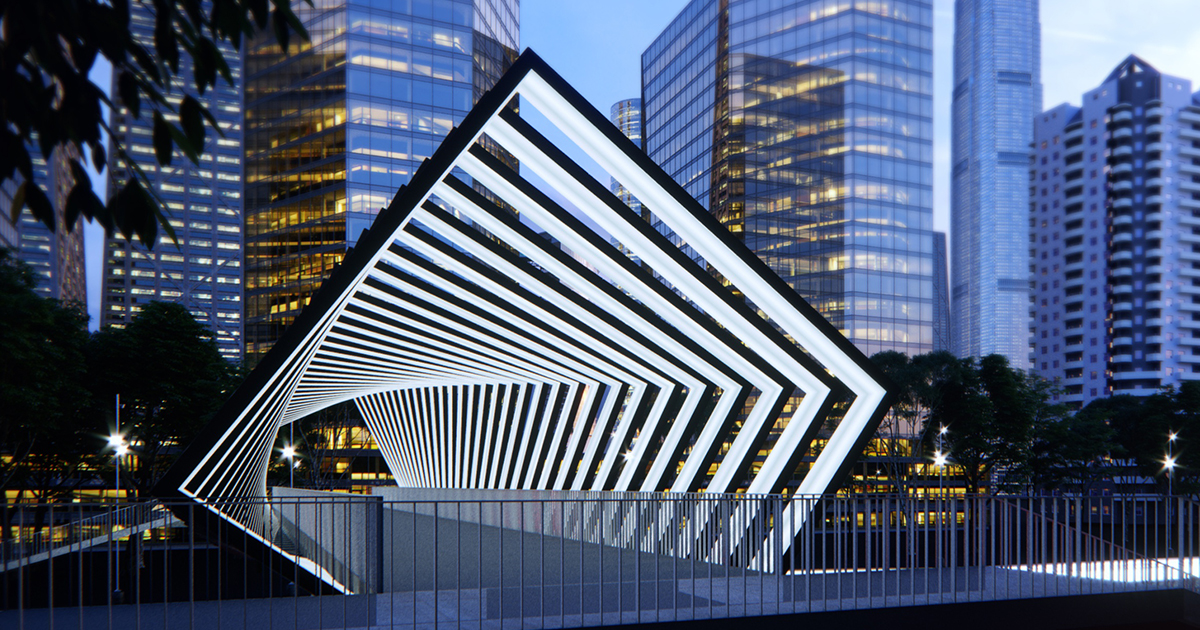
Big cities have a great number of footbridges traversing busy arteries. They are often unattractive, downgrading the overall urban impression.
Gold Winner – Archframe Design Awards 2021
Design Firm – KUCZIA
Project Title – Solar Skywalks
Project Category – Bridge Design
Project Status – Built
Architect/Designer – Dr. Peter Kuczia
Design Team – Peter Kuczia, Alek Pluta (renderings)
Practice – Professional Architect
Country – Germany
Our idea of cladding the unsightly pedestrian bridges with aesthetic, power generating photovoltaic modules and converting them into appealing city spots is not only sustainable but creates sculptural diversity that becomes a cityscape eye-catcher.
We propose more than just various design objects – we offer a system of sustainable urban structures with distinguishable visual appearance.
This sustainable concept has been created for existing footbridges in Chinese metropolises but it is just as well to apply for any new structures in any site worldwide. With only one rectangular shape of the PV panel, over 80 specific designs have been created for different urban areas of the city.
The applied thin-film photovoltaic modules produce electricity under the most unfavorable weather and site conditions. They are very light and resilient.
The electricity harvested from the sun can be used on site for lighting, elevators or escalators. E-car and e-bike charging stations under the footbridges directly utilize the locally generated solar power. Eye-catching PV structures make the e-charging and e-sharing points easy locatable for the users.
The noticeable structures attract the attention of passers-by and this is to be used to educate about sustainability. The idea of using them as sources of informal education for sustainability is crucial to the project.
The implemented display measures will provide passing persons with information about various aspects of the use of solar energy and thus lead to a better understanding and acceptance of solar solutions.
The design of a medium size footbridge with a medium density of panels can generate about 18,000 KWh of electricity per year. Since the electricity mix in China is very carbon-intensive, 0.7 kg CO2 per KWh of PV electricity could be saved, a total of 12,600 kg CO2.
If the electricity generated in this example would be used to operate charging stations for electric scooters (in China these are rather slow, small scooters that need about 1 kWh for 100 m), the amount of electricity generated would be sufficient for a total distance of 1,800,000 km!
However, some proposed designs contain even many more panels and they will lead to much higher CO2 savings. For example, the long “Tube” design could save up to 105,000 kg CO2 per year.
The integrated solar panels gradually pay themselves off.
